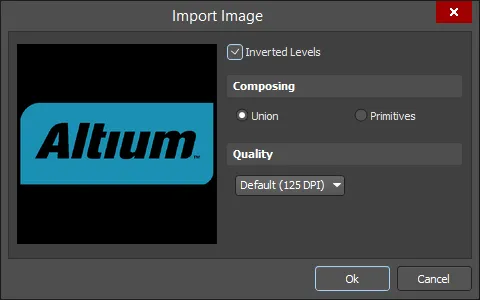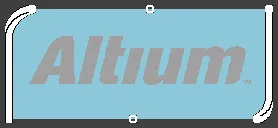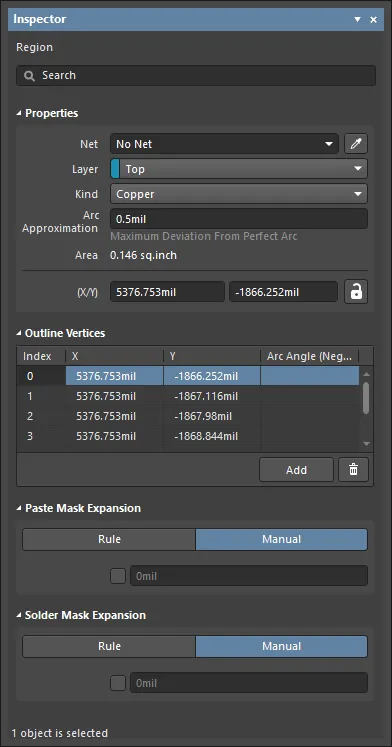Graphics/images are available for placement in the PCB editor by choosing Home | Place | Graphic from the main menus.

After launching the command, the cursor will change to a crosshair and you will enter graphic placement mode.
- Position the cursor then click or press Enter to anchor the first corner of the graphic's frame in which the graphic itself will reside.
- Move the cursor to adjust the size of the frame then click or press Enter to complete frame placement.
- A dialog will open in which you can browse to and select the required graphic. Select the file you want to insert then press Open to complete graphic placement.
- The Import Image dialog opens in which you can configure the graphic's settings.

Graphical Editing
This method of editing allows you to select a placed graphic object in the design space and graphically change its length, height, or location.
When a graphic object is selected, click and drag the editing handles to resize.

Click anywhere on the graphic away from editing handles then drag to reposition it. While dragging, the graphic can be rotated (Spacebar/Shift+Spacebar) or mirrored (X to mirror along the X-axis).
To clear the selection of (or de-select) the object, use the Esc key.
Non-Graphical Editing
Since the graphic image is converted into primitives and is inserted as primitives or regions, this method of editing uses the Region mode of the Inspector panel to modify the properties of a graphic.

After placement, the Inspector panel can be accessed in one of the following ways:
- Double-clicking on the placed object.
- If the Inspector panel is already active, select the object, right-click then choose Properties from the context menu.
- With the object selected, click View | PCB | Inspector from the main ribbons.
Editing Multiple Objects
The Inspector panel supports multiple object editing, where the property settings that are identical in all currently selected objects may be modified. When multiples of the same object type are selected manually, an Inspector panel field entry that is not shown as an asterisk (*) may be edited for all selected objects.